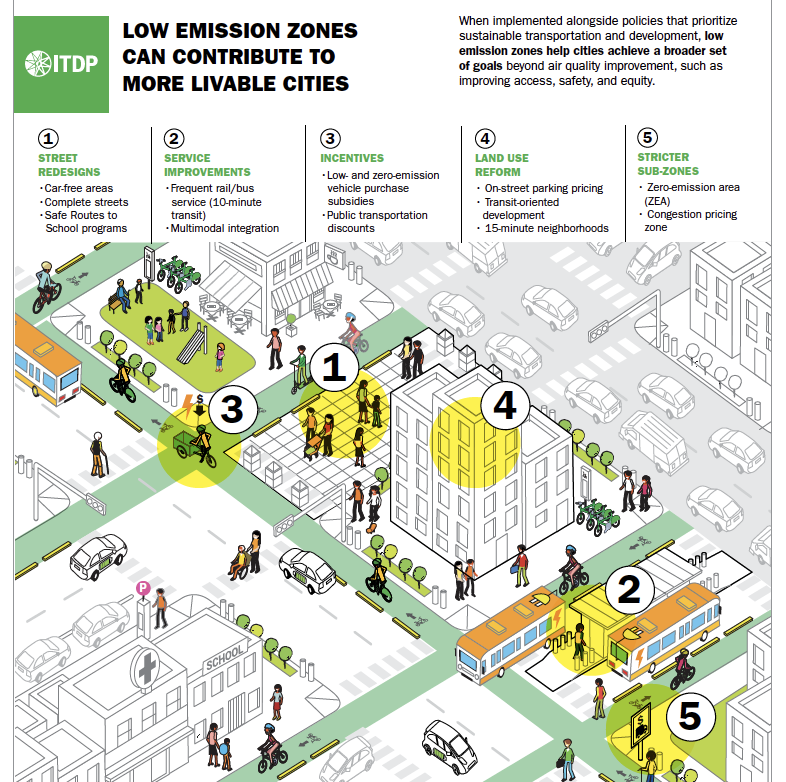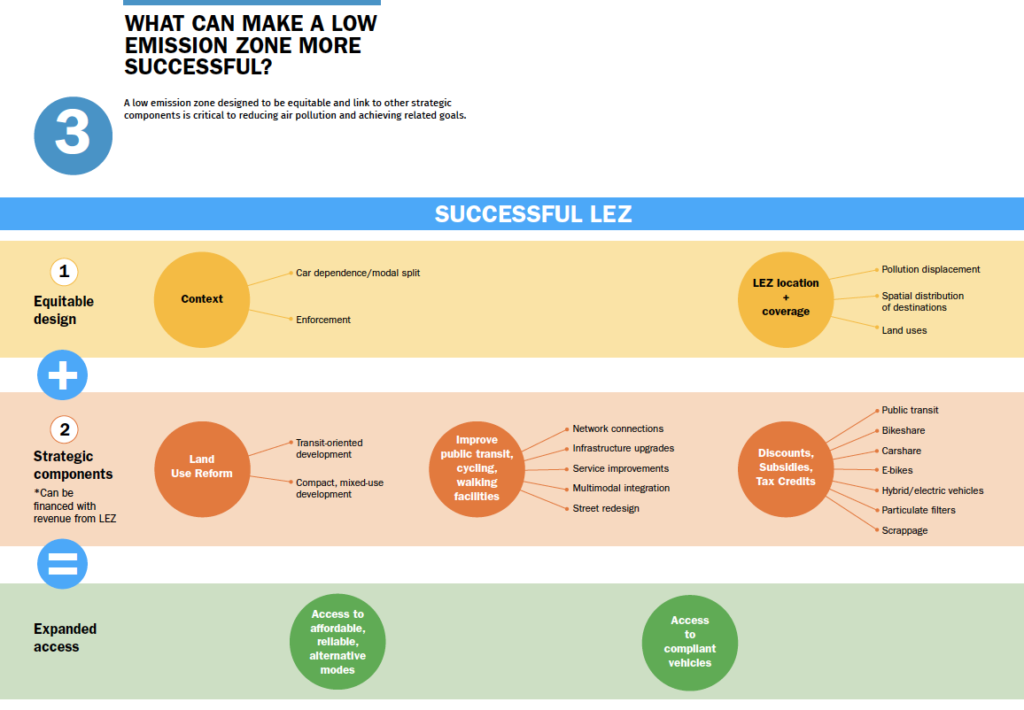Low emission zones (LEZs) are essential for cities regulating urban freight. Though low-emission zones have been primarily implemented as an air quality improvement strategy, they have the potential to catalyze a faster transition to electric vehicles and encourage more compact development that facilitates walking, cycling, and using public transportation.
Momentum around low-emission zones is growing. As of 2022, Europe might have over 320 low- or zero-emission zones, a growth of 40% since 2019. There are also successful non-European examples of LEZs, such as in Haifa, Seoul, and several Chinese cities. In addition, many other cities, including Bogotá, Jakarta, Mexico City, and Cape Town, have committed to implementing low (and zero) emission zones as part of the C40 Green and Healthy Streets initiative. As more and more cities consider designing and implementing low-emission zones, it is essential to understand what a low-emission zone is (and is not), what impacts they can deliver, and how to ensure equity and success.

Building on ITDP’s Taming Traffic report highlighting various strategies for reducing driving, The Opportunity of Low Emission Zones report offers a closer look at LEZs to provide context and background for decision-makers and stakeholders interested in understanding these potential strategies for their city.
The first low-emission zones originated in European cities to address dangerously poor air pollution and its health impacts, with the very first one adopted in Sweden in 1996. LEZs aimed to improve air quality by limiting high-polluting, heavy-duty vehicles like commercial trucks from driving in city centers (or charging them to do so). However, many LEZs now include light-duty vehicles like passenger cars, and restrictions or charges vary based on the emission level of the vehicle.
Cities justified expanding LEZs to more types of vehicles to more effectively combat worsening air quality and accelerate the uptake of cleaner vehicles. In recent years, LEZs have grown in size and scope. They are increasingly complemented by policy initiatives that help achieve goals beyond air quality improvement, such as reducing demand for driving, accelerating fleet turnover, reducing noise, increasing safety for cyclists and pedestrians, and incentivizing public and active transport use.

Source: ITDP
